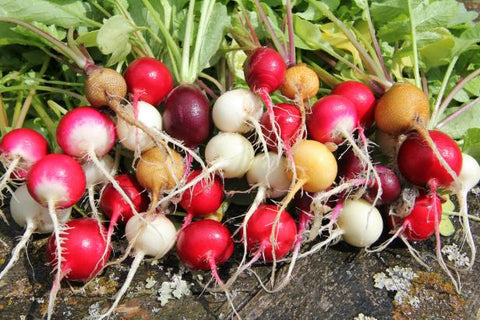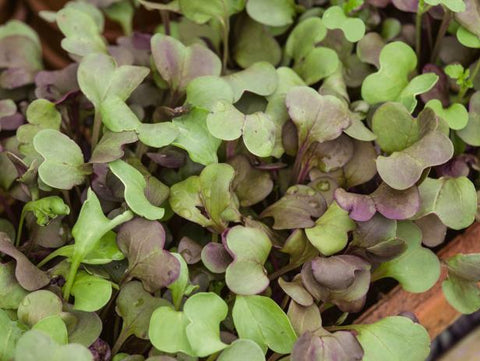As winter's frost gives way to the warmth of spring, gardeners everywhere prepare to rejuvenate their outdoor sanctuaries. While many associate spring cleaning with tidying up indoors, it's equally crucial to tend to your garden's needs as the season shifts. In this comprehensive guide, we'll delve into the essential tasks required to breathe new life into your garden and set the stage for a flourishing growing season ahead.The following content also has some reference value for raised garden beds.
- Clearing Debris and Litter
- Pruning and Trimming
- Soil Preparation
- Weed Control
- Division and Transplanting
- Pest and Disease Prevention
- Tool Maintenance
- Planning and Planting
- Final Touches
- Monitoring and Adjusting
- Conclusion
Clearing Debris and Litter
Removal of fallen leaves and branches
With the arrival of spring, it's time to bid farewell to the remnants of winter storms. Fallen leaves and branches scattered across the garden not only detract from its beauty but can also hinder the growth of emerging plants. Clearing away this debris ensures a clean slate for the new season.

Cleaning out garden beds and borders
As nature awakens, it's essential to prepare the soil for the season ahead. Garden beds and borders may have accumulated dead plant material, spent foliage, or invasive weeds during the dormant winter months. Removing these remnants allows fresh air to circulate around emerging plants and minimizes the risk of disease.
Pruning and Trimming
Pruning dead or damaged branches
Inspecting your garden's trees, shrubs, and perennials reveals any branches that have succumbed to winter's chill. Pruning away dead or damaged branches not only enhances the plant's appearance but also promotes healthy growth by redirecting energy to viable areas.
Trimming overgrown shrubs and hedges
Spring is an opportune time to shape and rejuvenate overgrown shrubs and hedges. Trimming back excess growth not only maintains the garden's aesthetic appeal but also encourages dense, vigorous foliage. By sculpting these plants now, you'll set the stage for a well-manicured landscape throughout the growing season.
Soil Preparation
Turning over soil in garden beds
One of the foundational tasks of spring gardening involves revitalizing the soil. Using a garden fork or tiller, gently turn over the soil in garden beds to loosen compacted earth and aerate the root zone. This simple yet essential step improves drainage, promotes root growth, and enhances overall soil health.
Adding compost or organic matter
To nourish your garden's soil and provide a nutrient-rich foundation for plants, incorporate compost or organic matter into the earth. Compost acts as a natural fertilizer, enriching the soil with essential nutrients while fostering a thriving community of beneficial microorganisms. This organic amendment enhances soil structure, moisture retention, and fertility, laying the groundwork for robust plant growth.
Weed Control
Removing existing weeds
With spring's arrival comes the resurgence of weeds eager to stake their claim in your garden. Take proactive measures to eradicate these unwanted intruders, ensuring they don't compete with your prized plants for resources. Pulling weeds by hand or using gardening tools allows you to target their roots and prevent future regrowth.
Mulching to prevent weed growth
An effective strategy for thwarting weed growth is to apply a layer of mulch to garden beds. Mulch acts as a protective barrier, smothering existing weeds and preventing new ones from taking root. Additionally, organic mulches such as straw, wood chips, or shredded leaves provide insulation, retain soil moisture, and contribute to soil fertility as they decompose.
Division and Transplanting

Dividing overcrowded perennials
Over time, perennials may become overcrowded, resulting in diminished vigor and diminished bloom. Spring offers an ideal opportunity to divide these plants, allowing you to rejuvenate them while expanding your garden's palette. By carefully separating crowded clumps into smaller sections and replanting them in well-prepared soil, you encourage healthy growth and ensure a vibrant display of flowers.
Transplanting seedlings or young plants
Whether you've nurtured seedlings indoors or acquired young plants from a nursery, spring marks the time to transplant them into your garden's fertile embrace. Choose a suitable location that meets the plant's light and soil requirements, ensuring it has ample space to thrive. Handle seedlings with care, minimizing root disturbance to facilitate a seamless transition into their new environment.
Pest and Disease Prevention
Inspecting plants for signs of pests or diseases
Vigilance is key to warding off potential threats to your garden's health and vitality. Regularly inspect plants for any signs of pest infestation or disease development, such as discolored foliage, distorted growth, or unusual markings. Early detection allows for prompt intervention, minimizing the risk of widespread damage.
Taking preventative measures
To fortify your garden's defenses against pests and diseases, implement preventative measures that promote a harmonious balance between plants and their environment. Utilize organic pest controls, such as insecticidal soaps, neem oil, or predatory insects, to deter common garden pests without harming beneficial organisms. Similarly, apply preventive fungicides or practice good sanitation to mitigate the spread of plant diseases before they take hold.
Tool Maintenance
Cleaning and sharpening gardening tools
Just as a chef relies on sharp knives to execute precision cuts, a gardener depends on well-maintained tools to achieve optimal results. Take the time to clean dirt, sap, and debris from your gardening implements, ensuring they remain in pristine condition for the season ahead. Sharpen blades as needed to facilitate clean cuts, minimizing stress on plants and promoting faster healing.
Checking equipment for wear and tear
As you prepare for the demands of spring gardening, conduct a thorough inspection of your gardening equipment to identify any signs of wear or damage. Check hoses for leaks, test sprinklers for proper function, and assess the condition of trellises, stakes, and supports. Repair or replace any compromised equipment to ensure seamless operation and prevent disruptions to your gardening routine.
Planning and Planting
Mapping out garden beds and plant placements
Strategic planning lays the foundation for a successful garden, guiding decisions on plant selection, placement, and spacing. Take time to assess your garden's layout and microclimates, considering factors such as sunlight exposure, soil composition, and water availability. Create a detailed planting plan or sketch to visualize your vision and optimize the use of space.
Starting seeds or planting new additions
With your planting plan in hand, embark on the exciting journey of sowing seeds or introducing new additions to your garden. Whether you're cultivating vegetables, flowers, or herbs, follow recommended planting depths and spacing guidelines to ensure optimal growth and development. Take into account each plant's specific requirements and compatibility with neighboring species to create harmonious plant communities.
Final Touches
Adding decorative elements or garden ornaments
Elevate your garden's aesthetic appeal by incorporating decorative elements or artistic accents throughout the landscape. From ornate trellises and whimsical sculptures to colorful planters and enchanting pathways, these embellishments infuse personality and charm into your outdoor space. Experiment with textures, colors, and focal points to create visual interest and evoke a sense of enchantment.

Watering and care
With newly planted areas and established beds alike, maintaining adequate moisture is essential for plant health and vitality. Water newly transplanted seedlings or young plants thoroughly, ensuring the soil is evenly moist but not waterlogged. Monitor soil moisture levels regularly and adjust the watering frequency as needed, paying attention to weather conditions and seasonal fluctuations.
Monitoring and Adjusting
Regularly checking on plant health
The journey of gardening is one of continuous observation and adaptation, requiring a keen eye and a responsive approach. Regularly monitor your garden's health and progress, observing plant growth, flowering patterns, and pest activity. Take note of any changes or abnormalities and be prepared to intervene as necessary to address emerging issues promptly.
Making adjustments based on observations
Armed with insights gained from attentive observation, make informed decisions to optimize your garden's performance and resilience. Whether adjusting watering schedules, implementing pest management strategies, or fine-tuning plant placements, adapt your approach to meet the evolving needs of your garden ecosystem. Embrace experimentation and flexibility as you refine your gardening practices, striving for harmony between nature and nurture.
Conclusion
As you embark on the journey of spring cleaning for your garden, remember that each task contributes to the overall health, beauty, and productivity of your outdoor oasis. By prioritizing essential tasks such as clearing debris, pruning plants, preparing soil, and implementing pest control measures, you lay a solid foundation for a successful growing season. With diligence, creativity, and a touch of green-thumb magic, your garden will flourish, rewarding you with a bountiful harvest of joy, beauty, and connection to the natural world.









